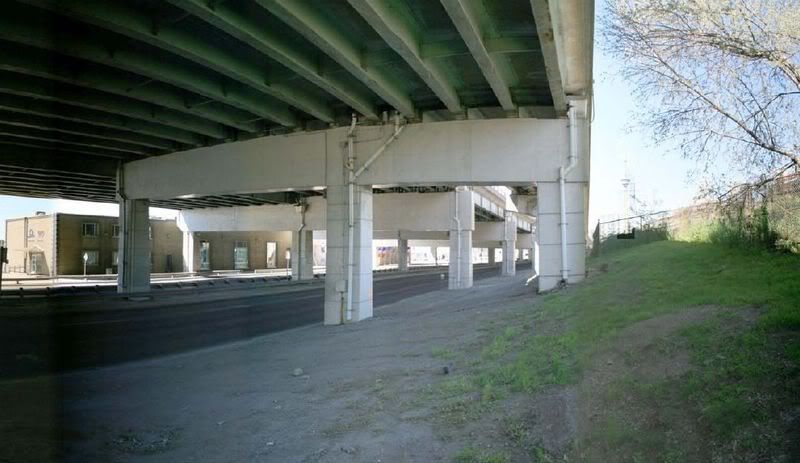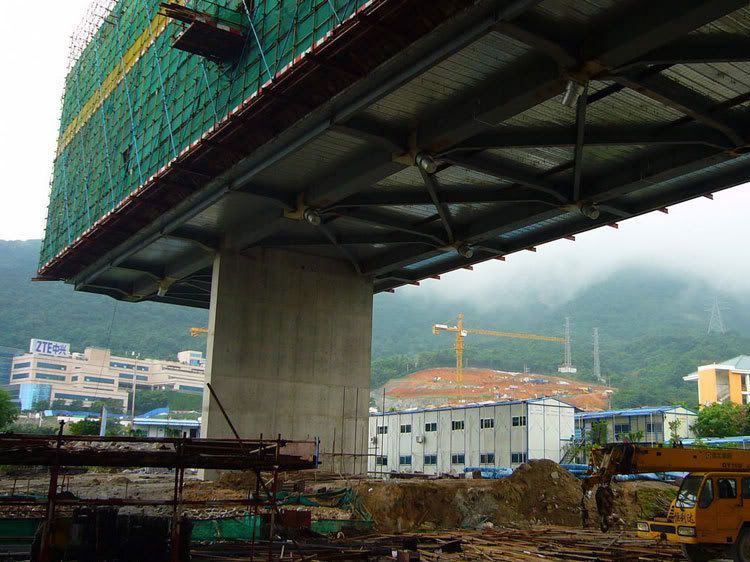From the Star, by Hume (it seems he is back from the Prozac holiday!):
Civic cowardice fuelling backward Gardiner plan
Jun 20, 2008 04:30 AM
Christopher Hume
The car isn't about to disappear from Toronto, but that doesn't mean the Gardiner Expressway shouldn't.
Which is why plans released recently by Waterfront Toronto, which call for the elevated highway to be torn down between Jarvis St. and the Don Valley Parkway, disappoint.
No disagreement that removing any part of the Gardiner is entirely desirable, but focusing on the stretch east of Jarvis misses the point. The argument, of course, is that the expressway serves as an obstacle that separates the city from the waterfront. That's exactly why the critical stretch of the Gardiner, the length that must be demolished, runs from Spadina in the west to Jarvis and beyond. That's where most of the major north/south streets are located, including Yonge, Bay, York as well as Spadina and Jarvis. These are the arteries that carry most of us to the water's edge.
This is also the area where land values would increase most dramatically were the Gardiner to go. In other words, here's where the money would be made to pay the cost of the project.
Lake Shore Blvd. then becomes the main east/west thoroughfare across the bottom of the city. Traffic engineers will insist it must be widened to accommodate the extra load, but as usual they're wrong. Traffic, unlike water, doesn't automatically flow to the next lowest level. Experience in New York and San Francisco, which both lost raised highways unexpectedly, proves that to some extent, traffic simply disappears. People find other routes, they use transit, they respond in unforeseen ways.
The rise of gas prices, the decline of the North American auto industry and the demise of the SUV mark the beginning of changes that will fundamentally, traumatically, alter how we live. North Americans will have to be dragged into the future kicking and screaming, but ultimately we have no choice.
That's why Toronto should do the smart thing with the Gardiner, not give in to civic cowardice.
Last week, the board of Waterfront Toronto voted to launch an environmental assessment to study dismantling the east end of the Gardiner. Mayor David Miller, a board member, declared that this was the first proposal he'd seen that was doable. He was talking about the politics of demolition, not the reality.
It seems that Miller, not known for vision or boldness, won't be the mayor who leads Toronto into the 21st century. With leaders such as Prime Minister Stephen Harper and federal Finance Minister Jim Flaherty, he will be remembered as one who tried to prolong a period of history fast winding down. It will turn out to have been a blip, a mere two generations whose lives were based on utterly implausible assumptions about endless cheap energy and land.
Instead of being reactionary and cowardly, we should look to cities – New York, Seoul, San Francisco, Boston, Oslo and Paris – that have taken down their Gardiners and lived to tell the tale.
The Gardiner, we mustn't forget, is a symbol as well as a highway. Failure to deal with it intelligently will send a message to Torontonians and the rest of the world that this is just another North American burg with its collective head buried in the sand. Canada's horrific record on environmental regulation already has many concerned about where we're headed.
The old Toronto compromise, so neatly encapsulated by the reduced proposal, won't do this time. Half measures no longer suffice. Yes, people will shout and scream. What else is new?
It's like smoking; one day we will look back and shake our heads. What seems normal now will have become unthinkable.
Christopher Hume can be reached at
chume@thestar.ca
http://www.thestar.com/GTA/Columnist/article/446505
AoD








